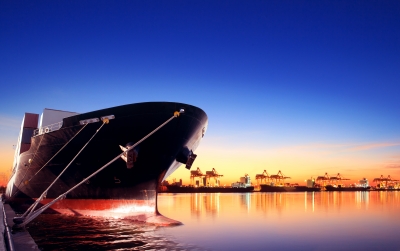Regulatory reforms, such as the separation of regulatory and operational functions of port authorities, are necessary if the Philippines is to address the inefficiency and lack of international competitiveness of its ports, according to an analysis by state think tank Philippine Institute for Development Studies (PIDS).
In his policy note titled “Regulatory Challenges of the Philippine Logistics Industry” and released in March, PIDS research consultant Jose L. Tongzon said one factor behind the poor performance and low international competitiveness of the Philippine logistics sector is the industry’s “restrictive and incoherent regulatory framework, as can be seen in the case of the Philippine ports.”
“The efficiency of the ports matters because their costs account for a large part of maritime transport costs, which providers and shippers usually shoulder by way of increased shipping charges. Delays due to port inefficiency can also lead to higher inventory costs and even loss of business opportunities,” the policy note stated.
Currently, the Philippine Ports Authority (PPA) oversees almost all ports in the country, except those under the Cebu Port Authority (CPA), which has jurisdiction over ports in Cebu, and ports overseen by several Freeport zones.
Based on its Charter, PPA has both operational and regulatory functions; likewise, the Charter of the CPA equips it with regulatory and operational functions over all ports in the province of Cebu.
The policy note said, however, that with the setup allowing both port authorities to have shares in the revenue from their port operations, “the PPA and the CPA may tend to approve any rate or charge increases applied by the terminal operators and formulate policies and regulations that may be beneficial to the terminal operators, but could be detrimental to the interest of the logistics services providers and shippers.”
The policy note said that based on a study by Dr. Enrico Basilio in 2003 titled “The Philippine Port Sector. PPA: A Case of Regulatory Capture,” these situations “create a conflict of interest, one of the major factors behind the high level of port inefficiency and exorbitant port charges.”
“Corollary to this is the fact that most ports in the country are under the management of the PPA. This situation leads to lack of interport competition and thus lower port efficiency,” the policy note added.
Although a somewhat centralized administration of ports can help avert investment duplication and excess capacity, the policy note also said “it tends to create a less competitive port environment.”
Two recommendations
The policy note recommends two regulatory measures to address issues on port regulations.
First is to revisit the management and regulation of ports, and establish one separate entity in charge solely of port regulation.
The policy note said that separating the regulatory and operational functions of ports has become a growing trend among ports around the world.
One good example of this trend, it said, is Singapore’s Maritime and Port Authority (MPA), the counterpart of the Philippines’ Maritime Industry Authority (Marina).
To separate operational from regulatory functions, the Singapore government established the MPA in 1996 through the merger of the Marine Department, the National Maritime Board, and the regulatory departments of the former Port of Singapore Authority (PSA).
Since then, the main job of MPA has been to regulate the port and shipping activities in Singapore, while PSA has been tasked to manage and run the ports.
Reviewing and separating PPA’s functions has also been recommended by several studies and master plans. For one, the National Logistics Master Plan, spearheaded by the Department of Trade and Industry, aims to address the “conflicting mandate” of PPA.
The second recommendation is to improve competition in the logistics industry by allowing more private-sector participation by way of concessions through build-operate-transfer (BOT) or lease agreements.
Under this setup, the policy note said, PPA and CPA may grant to private concessionaires the right to finance, build, and operate a terminal or parts of a port operation for a limited time. After this, the facility and its equipment will be transferred free of charge to PPA and CPA.
The policy note cautioned, however, that less government involvement in the port management and operation “does not guarantee an improvement in port efficiency.”
“Just as governments can fail to allocate resources efficiently, there is also such thing as market failure,” it said.
“Ports can also be considered as a public good with substantial positive economic externalities that cannot be left to the profit-oriented private sector. Under this concept, a port does not have to be profitable or efficient as long as it provides a vital service and contributes to the economic development of a country by facilitating international trade and providing a vital link between various regions in the country,” the policy note further stated. – Roumina Pablo
Image courtesy of khunaspix at FreeDigitalPhotos.net






